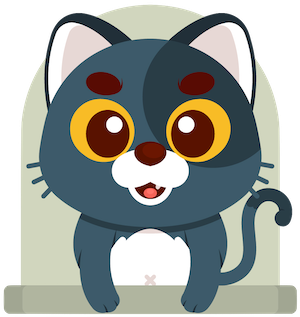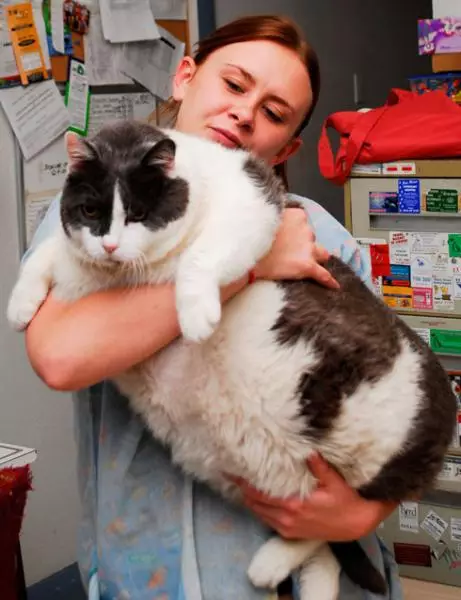In the heart of one of the most pet-loving nations, the United Kingdom, a hidden crisis looms over our feline companions. Obesity in cats has escalated to an epidemic level, with a staggering 39 to 52 percent of cats classified as overweight or obese. This alarming trend raises critical concerns about the health and longevity of pets that many of us treat as family members. The weight threshold for obesity classifies a cat as obese when it exceeds its optimal weight by 20 percent due to excess fat accumulation. Meanwhile, cats sitting in the 10 to 19 percent range are merely labeled overweight. This classification isn’t just a matter of aesthetics; it represents a genuine health risk that underscores a need for serious intervention and awareness among pet owners.
The impact of obesity extends far beyond a mere number on a scale. Studies have established a profound link between weight conditions and life expectancy in cats. An overabundance of calories not only traps cats in a cycle of lethargy but also precipitates numerous health issues. Thus, carving out a path toward optimal body weight should be central to every pet owner’s care plan. When assessing optimal weight, it’s essential to account for variables such as breed and age, as these factors determine the baseline for a healthy weight range.
Understanding Body Condition Scoring
To measure a cat’s wellness effectively, veterinarians utilize the Body Condition Score (BCS), a practical tool evaluating a cat’s physique on a scale ranging from 1 to 5. A score of 1 indicates severe emaciation, whereas 5 denotes an obese state. A healthy score of 3 is where we ideally want our feline friends to land. The visual checks that accompany this scale, such as feeling the ribs and assessing the presence of a waist, help establish a cat’s overall body condition.
A critical sign of obesity is when the ribs become cloaked beneath a robust fat layer, creating an unhealthy appearance often described as a “pendulous skirt,” which adds to the risk of various ailments, including diabetes, joint pain, and cardiac issues. It’s apparent that maintaining a cat’s ideal body weight through diligent tracking and evaluation is paramount to promoting a thriving, active lifestyle.
The Hidden Triggers of Weight Gain
Weight gain in cats is essentially a result of a ‘positive energy balance’—essentially, consuming more calories than expended. Understanding the factors contributing to this imbalance can empower pet owners to take proactive measures. For instance, distinctions arise between breeds; purebred cats are less prone to obesity compared to domestic moggies, shedding light on the genetic factors influencing weight management.
Emerging research also reveals a startling correlation between neutering and weight gain. Following neutering, cats experience a significant metabolic shift with a decreased energy requirement—neutered felines need 20 percent less food to sustain their body condition. Coupled with a decline in physical activity due to reduced roaming tendencies, this can set the stage for weight gain, especially in sedentary households.
Another variable that cannot be overlooked is age. Young cats under two years are less likely to face weight issues, yet those aged between 2 to 10 years find themselves at an increased risk. This demographic shift demands an agile approach to their diet and lifestyle, as their energy needs change alongside their age.
Diets and Solutions: Crafting a Healthier Future
Feeding practices contribute significantly to the obesity epidemic. Offerings of palatable, energy-dense diets, particularly when used liberally as treats, can foster unhealthy eating habits leading to weight gain. Certain medications, such as corticosteroids, can further exacerbate this issue, increasing appetite or reducing metabolism. The need for a systematic approach to managing calorie intake is increasingly critical.
Implementing a weight loss program requires vigilance and gradual progress, as cats can be particularly susceptible to weight fluctuations. The transition to a veterinary-recommended diet that emphasizes high protein, low fat, and low carbohydrates proves effective in promoting weight loss while preserving muscle mass. In tandem with dietary shifts, fostering an environment that encourages physical activity is crucial. Integrating playtime, utilizing puzzle feeders, and creating opportunities for climbing can stimulate activity and prevent obesity.
Even after achieving a target weight, the journey does not end. Regular weigh-ins facilitate ongoing monitoring, ensuring that the unwanted pounds do not stage a comeback. Pet owners must stay cognizant of their feline friends’ weight, recognizing that vigilance against gradual weight gain is just as important as fostering weight loss.
As cat owners, we have the power to shape healthier futures for our beloved pets. By understanding the risks, employing proper nutrition, and encouraging a more active lifestyle, we can combat the looming challenge of obesity and enrich our cats’ lives significantly.


Leave a Reply